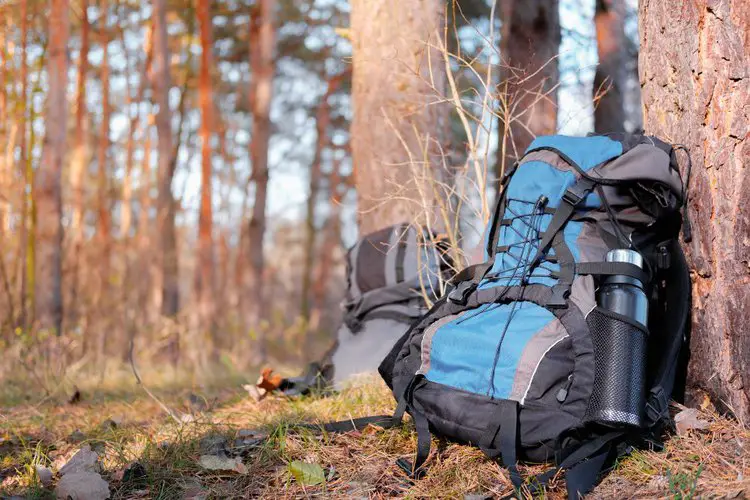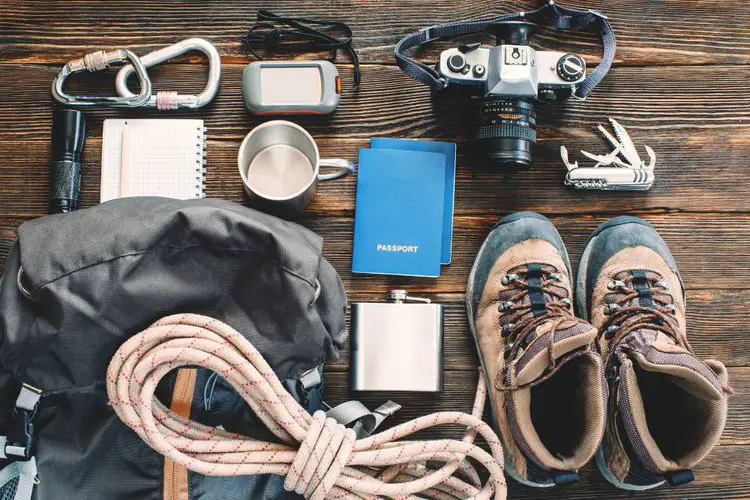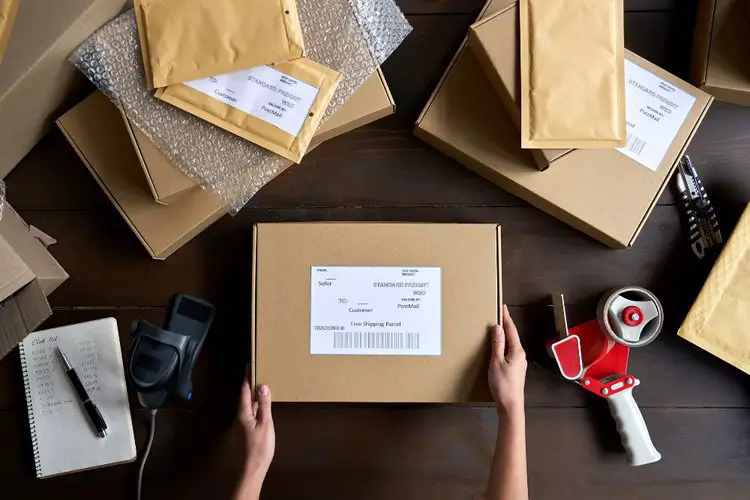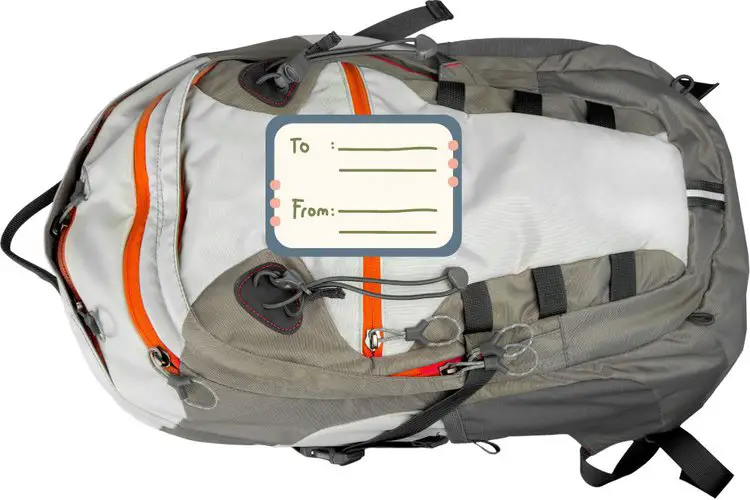As you stand at the shipping counter, you can’t help but feel relieved that your latest hiking adventure has come to an end.
You’re ready to head home and leave the wilderness behind – or so you thought.
With a heavy heart, you hand over your backpack to the shipping agent, who assures you that it will be delivered safely to your doorstep.
You feel a sense of relief wash over you as you turn to leave, confident that your trusty backpack will soon be reunited with you.
But as you’re driving home, your phone rings. It’s the shipping company, informing you that your backpack has been delivered – but to the wrong address.
Your heart sinks as you realize that your backpack has been mixed up with someone else’s. You frantically try to explain the situation to the shipping company, but it’s too late.
The other hiker has already received your backpack, and you’re left empty-handed.
After hours of phone calls and negotiations, you finally manage to get your backpack back – but not before it’s been damaged by the other hiker’s careless handling.
You realize that you should have taken extra precautions to label and package your backpack properly for shipping.
From this experience, you learn that shipping a hiking backpack is not as simple as it seems. It’s important to take the necessary steps to ensure that your backpack arrives at its intended destination, safe and sound.

Contents
Step-by-Step Instructions:
In March 2023, I went on a hiking trip with some friends. We had an amazing time on the trail, but when it was time to head home, I realized I had no idea how to ship my backpack.
I was stuck with a massive backpack that I didn’t want to carry around the airport or on my flight. I had to figure out a solution quickly.
After some research and a few phone calls, I finally figured out how to ship my backpack. But it was a stressful and confusing experience that I hope to never repeat.
That’s why I’ve created this guide to help you avoid the same situation.
In this article, we’ll provide you with step-by-step instructions on how to ship a hiking backpack, so you can get your gear home safely and without any hassle.
Step 1: Choose a shipping company
The first step is to choose a reliable shipping company. There are many options available, including USPS, FedEx, UPS, and DHL.
Take some time to research and compare the services and prices of each company to find the best fit for your needs.
Step 2: Pack your backpack
Before shipping your backpack, you need to ensure that it’s properly packed. Here’s how:
- Remove any loose or fragile items: Before packing your backpack for shipping, make sure to remove any loose or fragile items that may move around during transit and damage the backpack or other items inside it. Examples of such items include water bottles, cookware, and electronics.
- Fill empty spaces: To prevent your backpack from shifting around during shipping, fill any empty spaces inside the backpack with soft materials like bubble wrap, newspaper, or clothing.
- Protect zippers and straps: To prevent the zippers and straps from getting caught or damaged during shipping, it’s a good idea to cover them with tape or foam.
- Use a shipping box: Place your backpack in a sturdy shipping box that is slightly larger than your backpack. This will provide additional protection and help prevent the backpack from getting damaged during shipping.
- Add extra padding: Add extra padding to the shipping box by lining the bottom and sides with bubble wrap or packing peanuts. This will help protect the backpack from impact and damage during shipping.
Last update on 2023-11-10 / Affiliate links / Images from Amazon Product Advertising API
- Seal the box: Once your backpack is securely packed in the shipping box, seal it with strong tape and clearly label it with the shipping address, your return address, and any other relevant information.
For more in-depth information on how to pack your backpack for shipping, check out our article on how to pack a hiking backpack.
By following these tips, you can rest assured that your backpack will arrive at its destination ready for your next adventure.”

Step 3: Label your backpack
Next, you need to label your backpack. Here’s how:
- Write the recipient’s name, address, and phone number on a label or directly on the backpack.
- Write your name and address as the sender.
- Place the label on a visible area of the backpack.
- 【Label Size】Sheet size: 8.5" X 11", Label size: 8.5" X 5.5";2 labels per sheet, total 100 sheets...
- 【Easily Print 】Internet shipping labels compatible with laser/inkjet printers, matte surface,...
- 【Powerful Adhesive】Shipping label has a strong bond to corrugated boxes and envelopes, mailing...
Last update on 2023-11-10 / Affiliate links / Images from Amazon Product Advertising API


Step 4: Choose a shipping option
Now it’s time to choose a shipping option. You can select from a variety of options, such as ground shipping, air shipping, or express shipping.
The cost and delivery time will vary depending on the shipping company and option you choose.
Step 5: Drop off your backpack
The final step is to drop off your backpack at the shipping company’s location or schedule a pickup.
Make sure to get a receipt or tracking number for your shipment so that you can track it and ensure that it arrives at its destination.

Notes:
Always check the shipping company’s restrictions and guidelines before shipping your backpack. Some companies may have size or weight limits or prohibit certain items.
Let me provide some information on America’s most famous shipping company, UPS, and the items they refuse to deliver.
UPS prohibits shipping certain items that are deemed hazardous or dangerous, such as explosives, firearms, and flammable materials. Additionally, they have a list of restricted items that require special handling or packaging, such as:
- Alcoholic beverages: UPS allows shipping of wine, beer, and spirits within the United States, but they must be packaged appropriately and require an adult signature upon delivery.
- Live animals: UPS prohibits the shipping of live animals, with the exception of certain insects and bees.
- Perishable goods: UPS allows shipping of perishable goods, such as food, as long as they are packaged properly and shipped via air delivery.
- Tobacco products: UPS prohibits the shipping of tobacco products, including cigarettes, or cigars.
- …
It’s important to note that UPS’s list of prohibited and restricted items may change, so it’s always best to check their website or contact customer service for the most up-to-date information.
Consider purchasing insurance for your shipment, especially if your backpack contains valuable or fragile items.
If you’re shipping your backpack internationally, you may need to fill out customs forms and pay additional fees.
Conclusion:
Shipping a hiking backpack may seem like a daunting task, but with these step-by-step instructions, it’s a simple and easy process.
Remember to choose a reliable shipping company, pack your backpack properly, label it clearly, choose a shipping option, and drop it off at the shipping company’s location.
By following these tips and taking precautions, you can ensure that your backpack arrives safely and securely at its destination.
And if you ever find yourself in a situation like mine, you’ll be prepared and stress-free!



